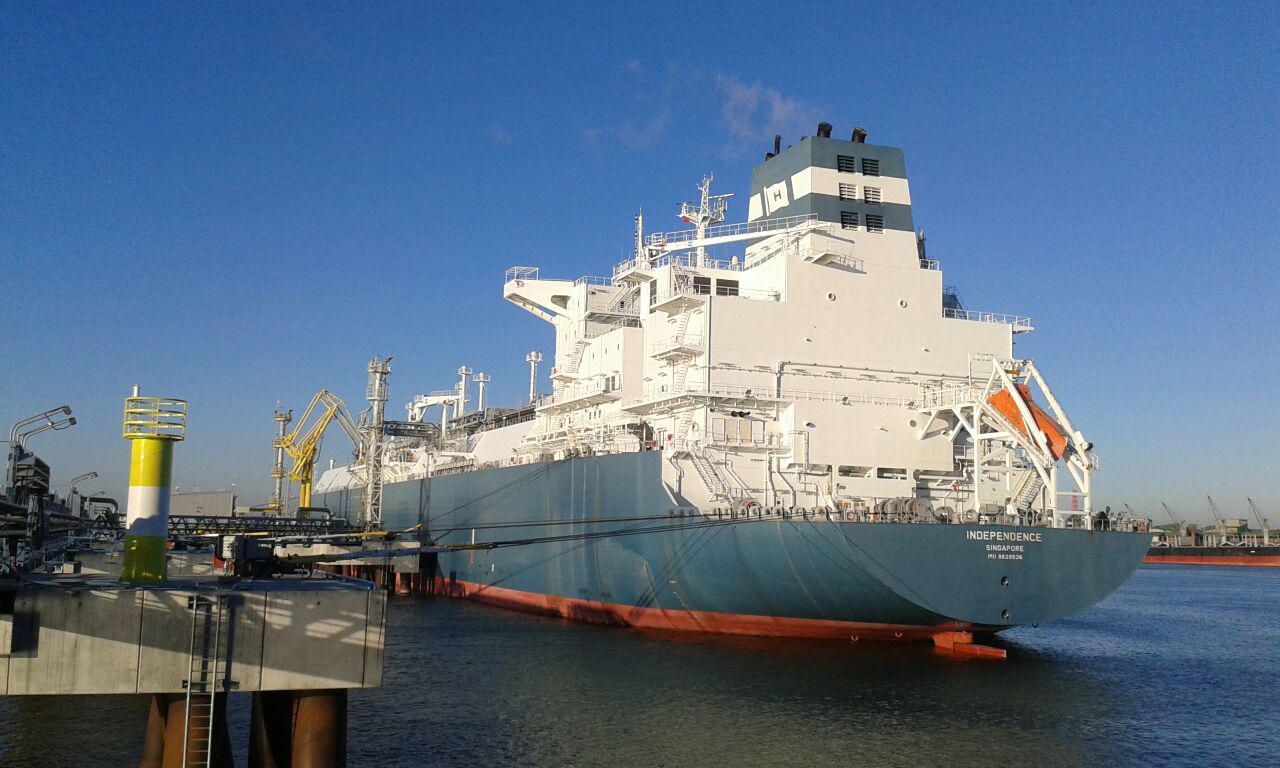Poles gave the Czechs a once-over when it comes to the construction of the second floating LNG terminal. The Czechs bolted, so only one unit will be procured. It is criticized by Greenpeace despite the fact it will help fight CO2 emissions in Polnad – writes Wojciech Jakóbik, editor in chief at BiznesAlert.pl.
Poland’s TSO has recently announced that the market research into whether another Floating Regasification Unit (aka FSRU2) will be needed in the Gdańsk Bay, has ended, but the news did not spark much interest. The facility, which was supposed to have a capacity of 4.5 bcm failed to attract enough customers.
„The procedure revealed that Gaz-System did not receive enough orders to pursue the FSRU2 project. At the same time, declarations of interest submitted by the participants indicate the possibility of continuing talks in the future,” Gaz – System reports. In the future the situation on the market may be favorable to the project in Gdańsk. At the moment, FSRUs are cropping up in large numbers across Western Europe. „This project without the Czechs on board does not make sense,” we were told by someone close to the endeavor. The FSRU2 was supposed to be used by Poland to deliver gas to its neighbors, including the Czechs, Slovaks, Hungarians, Romanians and Ukrainians, all of whom were mentioned by government officials. Of this group, the most important were our neighbors from Vaclav Havel’s country. The FSRU2 was to be linked with the Stork II gas pipeline project with a capacity of 5 billion cubic meters annually, and therefore serve the implementation of a long-term contract implemented in the Gulf of Gdańsk for several billion.
The disappointing outcome of the binding open season on FSRU2 shows that the Czechs probably want to continue with the current agreement with the Netherlands. Czech CEZ receives 3 billion cubic meters of gas annually through the Eemshaven terminal stationed off the coast of the Netherlands since 2022 after the outbreak of the energy crisis and the invasion of Russia in Ukraine. Its capacity is 8 billion cubic meters and the annual demand of the Czech Republic is 6 billion. The Polish FSRU should be ready in 2027-28, and therefore give an alternative to the Czech Republic, but apparently the Dutch were more convincing. The problem is also the fact that some potential customers of the FSRU2 may not be interested in dropping supply from Gazprom quickly. It is worth recalling that the countries of the Visegrad Group except for Poland are the last customers of Russians in Europe, despite the plan to abandon this direction by 2027, according to REPowerEU. The FSRU2 could make it possible, but one needs to actually want to make this happen.
This does not mean the end for the floating gas port in the Gulf of Gdańsk. Poland needs one FSRU with a capacity of 6.1 billion cubic meters annually. This has been already reserved by Orlen for district heating. The current strategy titled „The strategy for heating until 2030” with a view to 2040 assumes replacing about 70 percent of coal to 45 percent of gas by 2023 in its most ambitious version. Heating systems in cogeneration will need according to the Polish Association of Professional CHP plants from 2 to 12 billion cubic meters of gas per year in 2030 and 0.5-10 billion cubic meters in 2035.
Even if natural gas is partially displaced by hydrogen, and the popularity of large-scale heat pumps intended to one day replace systemic thermal power plants will increase, 6.1 billion cubic meters will still be needed. A FSRU at the end of this decade will be needed to ensure security of supply. In addition, considerations of strict energy security dictate redundancy in the design of gas supply routes from outside Russia to Poland, and therefore the next window to the world, in addition to Świnoujście, will reduce the threat to security of supply.
It is worth adding that it will be possible to return the unit leased in the Gulf of Gdańsk once it is no longer needed, without making it completely redundant. This means that it will serve the implementation of climate policy in the heating sector by replacing coal with gas, and in the event of an acceleration of changes and a faster decline in demand for gas, it can be discharged. A tender is underway for the supplier of the FSRU technology in which, according to Gaz-System, Korean BW LNG and Japanese Mitsui are leading.
Despite this, the project has met resistance from Greenpeace and several other environmental organizations that protest against fossil fuels. However, the transformation of the Polish heating industry leads through gas and at this point there is no shortcut available. Greenpeace estimated in its 2008 Energy Evolution report that by 2050, heat from urban heating systems will account for 67 percent of national heat production, or 666 petajoules. In an alternative scenario, more optimistic about the shift away from fossil fuels, they are still expected to account for about 60 percent of heat production in Poland in 2030 and 40 percent in 2040, assuming the rapid development of electric heating, geothermal and heat pumps, solar collectors and biomass. The share of RES in the heating sector is expected to reach 31 percent in 2030.
Of course, this is an old Greenpeace analysis, but changes in the heating sector may favor gas even more. „The trajectory of the transition to gas in the heating industry has greatly accelerated, so in fact we need gas more and faster than we assumed in the past,” says Dorota Jeziorowska from the Polish Association of Professional Heat and Power Plants. „Electricity and heating are important, here the priority is to move away from coal, but in conditions where it has a high share and the development of renewable sources is lagging behind, natural gas will continue to play an important role in the transition period,” Aleksandra Gawlikowski-Fyk told BiznesAlert.pl.
Therefore, if the heating industry has to transition to gas, then the rest of the economy should „degasify” in order to limit the increase in demand for this fuel. According to a forecast by Gaz-System from the National Transmission System Development Plan for 2024-2033, the demand for gas transmission services (not the demand for gas itself) in Poland may reach 24.1-28 billion cubic meters annually in 2030. Domestic production will give 4 billion cubic meters annually, the Baltic Pipe – 10 billion cubic meters for the year, the LNG terminal– 8.3 billion cubic meters for a year. This means a total of 22.3 billion cubic meters a year.
At a capacity of 6.1 billion cubic meters annually, the FSRU in the Gulf of Gdańsk will make it possible to meet the 28 billion cubic meters in demand with a surplus of 4 bcm. The FSRU will therefore be needed, but the time of its use and the volume received will depend on the consumption of gas in the economy outside the heating sector, which needs it anyway as it has no alternative. The icing on the cake may be the fact that the FSRU is supposed to be hydrogen ready, and also to import, if necessary, hydrogen and other renewable gases considered green in EU regulations. „As the Energy Forum, we published an analysis on this topic in June, in which we identified areas that have an alternative to natural gas. An example of such an energy change will be the replacement of natural gas with green hydrogen in the industrial sector,” Aleksandra Gawlikowski-Fyk from the Energy Forum told BiznesAlert.pl. We may produce some of the hydrogen domestically, but if we need the imports that the European Commission is expecting, we can use the FSRU to help.
Considering the Greenpeace slogan from the protest against a FSRU in France: „gas kills”, it should be recalled that „Russia kills”, and one of the most effective ways to stop it is the diversification of gas supplies, which will only be followed over time by the diversification of energy sources with a decrease in the share of fossil fuels.









